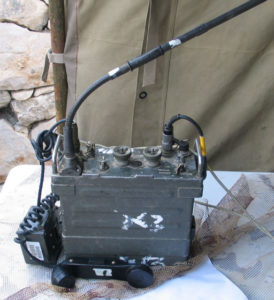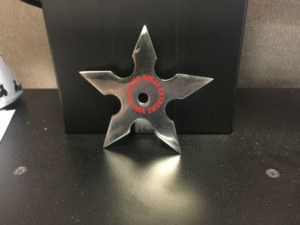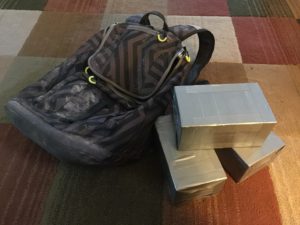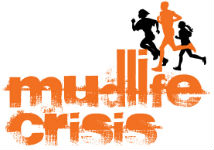
you can literally do it anywhere.
In all my hubbub about this whole cold shower thing I’ve been doing, I almost forgot about the other experiment that I’ve been doing of late to get in better shape for life. It wasn’t something I particularly planned to do, or that I thought through much. No, I pretty much just jumped into this one, because it is so easy to adopt. But I think it has the possibility of being just as valuable for better living as the Wim Hof experiment. And that, my friends and readers, is rucking.
Many of you in the obstacle course racing community may be familiar with GoRuck – a company that makes rucking gear and puts on rucking events that are designed to give civilians a taste of what military folks go through in training and evaluation scenarios. They’re staffed mostly with ex-military special operatives (mostly Army Special Forces, but a few Navy SEALs and special warfare combatants, Marine Force Recon and special operations command, an Air Force combat controller, and even an Israeli Special Forces veteran) and do their best to push their charges to the limit for their many all-day or multi-day events.

I don’t know why I glommed onto the idea of rucking, which is, at its very basic, wearing a backpack with weight in it and going for long walks. I know that I was always in pretty good shape when I was doing my Army training and doing a lot of rucking. When we were doing platoon operations in our summer training camps as ROTC cadets, for example, I’d generally end up being the radioman (when I wasn’t in a leadership position) because 1) I didn’t mind carrying the radio, which was larger than you probably think, and 2) I was pretty good with the radio lingo used by the Army and spoke clearly enough to be understood on the other end, most of the time.
Add some weight to your walks for better results? It's called #rucking! Check it out! Click To TweetI also know that a friend of mine who is currently an infantry NCO in the National Guard rucks regularly with his dog to help keep himself in shape.
So the idea of rucking made sense to me. I remember doing lots of rucks in my ROTC days (not as much as an actual officer as I was an Armor lieutenant, and had tanks to carry my stuff when necessary) and feeling pretty good most of the time – despite lack of sleep and such.
And I suppose that, in the back of my head, I was also remembering what I’ve heard about now-legendary obstacle course racer Hobie Call. Call is the guy who won the most recent Spartan Race World Championship, and is well known for his training regimen (learn more about it in the Obstacle Dominator podcast where Ben Greenfield and Hunter McIntyre interview him) in which he is normally wearing a weight vest of some sort. Whether he’s doing tons of lunges, pull-ups, running, burpees, etc., he has that thing on – meaning that when he’s racing and takes it off, he’s already at an advantage.

So about three weeks ago, I pulled out the backpack that I used in the Mud Ninja Maniac challenge I did back in 2012. The Maniac Challenge was that they offered a special medal to those who would do the course with 16 pounds of weight on their backs. As we learned as the event approached, the form that the weight would take was revealed: two gallon-sized jugs of water. My wonderful wife had found me a backpack in which they’d fit snugly, and I was off and running.
It was hard. Super hard. But I finished, and I still treasure that medal with the yellow ribbon (instead of the red one that all the non-maniac racers got). I haven’t done it since, and I don’t think that the Maniac option is even offered any more, but it did leave me with the backpack as well as the medal on my desk at work.
A preliminary ruck with one jug proved that I wasn’t going to be able to keep the water in the jug. I got home with a fairly wet backpack and lower back, so we weren’t going to be doing that (especially with the colder months approaching). But the GoRuck website had the answer: bricks. A trip to Lowe’s to buy bricks and duct tape (though GoRuck, being of a military bent, suggested 100-mph tape, the stronger military equivalent) resulted in my possession of three “weights” of two bricks apiece, taped together. A brick weighs about five pounds, so I was starting with thirty pounds of weight in my ruck. And… I was off.

Now, my morning pre-work walks of about 1 1/3 miles are rucks, instead. I walk as fast as I can (though I’ve recently been walking slower because our family has been dog-sitting for the aforementioned National Guard NCO’s dog, Max, and Max sniffs a lot), and I’m getting a good workout. Next week the plan is to add in some exercises done with the ruck, and perhaps some jogging as well.
I’ve learned a few things to work on with rucking, for those who want tips:
- I apparently tense my shoulders a lot, habitually. My shoulders (specifically, my trapezius muscles that run from the base of the neck out to the shoulder proper where they connect with the deltoids) have been sore much sooner than I ever remember them being in previous rucks. This is probably due to stress, which I need to work on, but it’s also a good reminder to relax the shoulders as I’m walking to let them be more supple and to stretch them out. So if your traps start to hurt because of the straps hanging on them, try relaxing your shoulders as much as possible.
- Wear shoes you’re comfortable with. I personally have been wearing my Vibram Fivefinger Treksports which are great for walking. There’s a frame of mind among many folks who aren’t in the barefoot realm that you should wear ankle-supporting shoes when rucking, but I agree with Daniel Vitalis of the Rewild Yourself podcast (check out his “F*ck Shoes” episode) when he says that those recommendations are probably for people who aren’t accustomed to wearing minimalist shoes full time – which I’ve been doing for several years at this point. I get more ankle stability from having more proprioception when I walk – letting my feet feel the ground and adjusting myself accordingly, naturally.Apparently the Treksport isn’t around any more – the newer version from Vibram is the Trek Pro, if you’re looking.
- Keep a designated backpack available any time you need to walk with the bricks in it (or, if you have one of the GoRuck packs themselves, keep weight in it). I keep mine ready near the door for any walk I need to take – getting the kids to or from school, walking down to the store, walking with friends and our kids for Pokemon Go hikes (yes, we’ve done a couple), or whatever you might be doing.I mentioned above that GoRuck does sell their own gear, such as well-made backpacks and weight plates. They’re designed for rucking, but also for daily use so that you can use them for both purposes simultaneously (they look nice). You can ruck for your commute, for example. They’re also a little bit prohibitively expensive for me for a while – the basic pack is in the $200 range and the weight plates run in the $30 apiece range depending on weight. But that is an option, for sure.My backpack was probably $30-40, and the bricks and duct tape together were less than $10 total. It also still has Mud Ninja mud on it, so it has that going for it. It might not last as long, but for now it’s doing just fine. And I know it was sturdy enough to get through an OCR.
- When loading your pack, do your best to keep the weight close to your body, and as high up as you can manage. When I was carrying that radio in ROTC, the packs had a compartment created just for that purpose, and it was right at the top of the pack. This wasn’t just because that was the easiest place to actually use the radio, it also made it easiest to carry. Having a saggy pack, pulling at your lower back, will give you bad posture and pain.Keep the straps as tight as you can handle – this will make the weight less floppy and more manageable, and also keep your shoulders back for better air intake and posture. Don’t overdo this, obviously… you don’t want to be cutting off blood flow or anything.If you use a chest strap, don’t pull it too tight for that last reason – keeping the shoulders back.
The next step will be to take on the GoRuck workout – they have a whole host of exercises to do with your ruck on. Most of them are simple bodyweight exercises, but made harder by using that ruck – which goes back to the whole Hobie Call-weight vest idea.
So if you walk a lot, give rucking a try and let me know how it’s working for you. Start with no more than 20 pounds or so and see how you do. That extra weight can really make a difference when you’re walking – you’ll break a bit of a sweat and build your cardio and muscular endurance really well.
Have you tried rucking or done a GoRuck event? Let us know how it went at our message board!






